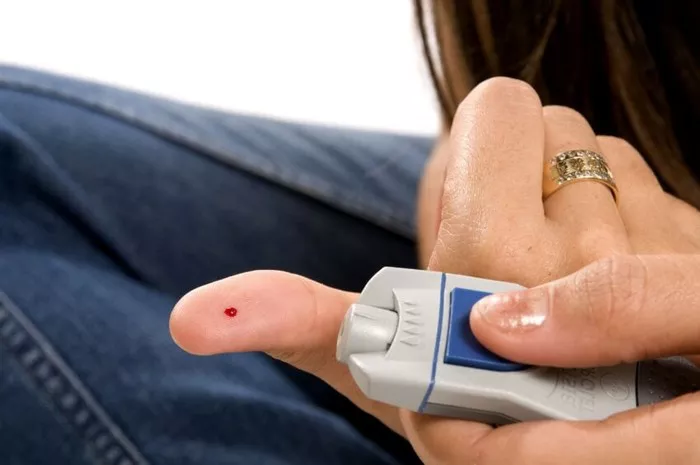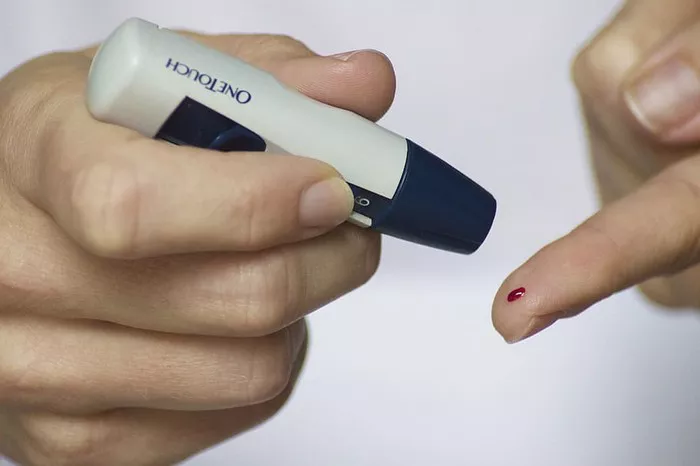Type 1 diabetes (T1D) is a chronic autoimmune disorder characterized by the destruction of insulin-producing beta cells in the pancreas, leading to an absolute deficiency of insulin. Unlike type 2 diabetes, which is primarily driven by insulin resistance and lifestyle factors, T1D is largely attributed to genetic predisposition and environmental triggers that provoke an immune-mediated attack on pancreatic beta cells. In this comprehensive guide, we delve into the intricacies of type 1 diabetes, exploring its etiology, pathophysiology, clinical manifestations, and management strategies.
The Origins of Type 1 Diabetes: A Complex Interplay of Genetics and Environment
The exact cause of type 1 diabetes remains elusive, but it is widely recognized as a multifactorial disease resulting from the interplay of genetic susceptibility and environmental triggers. Genetic predisposition plays a significant role in T1D susceptibility, with certain human leukocyte antigen (HLA) genotypes, such as HLA-DQ and HLA-DR alleles, conferring increased risk. However, not all individuals with high-risk HLA genotypes develop T1D, suggesting the involvement of environmental factors in disease pathogenesis.
Environmental triggers, such as viral infections, dietary factors, and early childhood exposures, are believed to initiate and accelerate the autoimmune destruction of pancreatic beta cells in genetically susceptible individuals. Viral infections, particularly enteroviruses and Coxsackie viruses, have been implicated in triggering the immune response against beta cells by molecular mimicry or bystander activation. Additionally, dietary factors, such as cow’s milk proteins and gluten, may contribute to T1D development in genetically predisposed individuals through mechanisms involving gut permeability and immune dysregulation.
The Immune-Mediated Pathogenesis of Type 1 Diabetes
Type 1 diabetes is characterized by the presence of autoantibodies against pancreatic islet cells, including antibodies against insulin, glutamic acid decarboxylase (GAD), insulinoma-associated antigen-2 (IA-2), and zinc transporter 8 (ZnT8). These autoantibodies serve as biomarkers for the autoimmune destruction of beta cells and are used in the diagnosis and prediction of T1D.
The autoimmune destruction of beta cells is initiated and perpetuated by a complex interplay of immune cells, cytokines, and inflammatory mediators. Autoreactive T lymphocytes, particularly CD4+ and CD8+ T cells, infiltrate the pancreatic islets and recognize beta cell antigens presented by antigen-presenting cells (APCs), leading to the activation of effector immune responses. Pro-inflammatory cytokines, such as interleukin-1 beta (IL-1β), tumor necrosis factor-alpha (TNF-α), and interferon-gamma (IFN-γ), further contribute to beta cell dysfunction and apoptosis, exacerbating insulin deficiency and hyperglycemia.
The process of autoimmune destruction in T1D is often insidious and progressive, with beta cell function declining over time. As beta cell mass diminishes, insulin secretion becomes insufficient to meet the body’s metabolic demands, resulting in hyperglycemia and clinical manifestations of diabetes.
Clinical Manifestations of Type 1 Diabetes: Recognizing the Signs and Symptoms
The clinical presentation of type 1 diabetes varies depending on the degree of beta cell destruction and the severity of insulin deficiency. In some cases, T1D may present acutely with symptoms of hyperglycemia and metabolic decompensation, while in others, the onset may be more insidious, with mild or nonspecific symptoms.
Common signs and symptoms of type 1 diabetes include:
1. Polyuria: Excessive urination due to the osmotic diuretic effect of hyperglycemia.
2. Polydipsia: Excessive thirst resulting from dehydration secondary to polyuria.
3. Polyphagia: Increased appetite and food intake, often accompanied by weight loss despite increased caloric consumption.
4. Fatigue: Persistent tiredness and lethargy, reflecting the body’s inability to utilize glucose for energy.
5. Blurred Vision: Visual disturbances caused by fluctuations in blood sugar levels and osmotic changes in the lens of the eye.
6. Ketoacidosis: In severe cases, untreated T1D can lead to diabetic ketoacidosis (DKA), a life-threatening condition characterized by hyperglycemia, ketosis, metabolic acidosis, and dehydration.
Early recognition and prompt diagnosis of type 1 diabetes are essential for preventing complications and initiating appropriate treatment. Blood glucose monitoring, measurement of glycated hemoglobin (HbA1c) levels, and detection of autoantibodies against pancreatic islet cells are key diagnostic tests used to confirm the diagnosis of T1D.
Management Strategies for Type 1 Diabetes: Balancing Insulin Therapy, Lifestyle Modifications, and Psychosocial Support
The cornerstone of type 1 diabetes management is exogenous insulin replacement therapy, which aims to mimic the physiological secretion of insulin and maintain target blood glucose levels. Insulin therapy may be administered through multiple daily injections (MDI) or continuous subcutaneous insulin infusion (CSII) via an insulin pump. Various types of insulin formulations, including rapid-acting, short-acting, intermediate-acting, and long-acting insulins, are available to meet individualized treatment needs and preferences.
In addition to insulin therapy, lifestyle modifications play a crucial role in type 1 diabetes management, helping to optimize glycemic control and reduce the risk of complications. Key components of diabetes self-management include:
1. Carbohydrate Counting: Monitoring carbohydrate intake and matching insulin doses to carbohydrate consumption to achieve postprandial glucose targets.
2. Physical Activity: Incorporating regular exercise and physical activity into daily routines to improve insulin sensitivity, cardiovascular health, and overall well-being.
3. Blood Glucose Monitoring: Regular self-monitoring of blood glucose levels using glucometers and continuous glucose monitoring (CGM) systems to assess glycemic control and make informed treatment decisions.
4. Healthy Eating Habits: Following a balanced diet rich in whole grains, fruits, vegetables, lean proteins, and healthy fats to support metabolic health and blood sugar regulation.
5. Stress Management: Implementing stress-reduction techniques, such as mindfulness meditation, deep breathing exercises, and relaxation therapy, to minimize the impact of psychosocial stressors on glycemic control.
Psychosocial support and education are integral components of comprehensive diabetes care, helping individuals with T1D navigate the challenges of living with a chronic condition and promoting self-efficacy and resilience. Diabetes self-management education and support (DSMES) programs provide valuable resources and tools to empower individuals with T1D to take control of their health and make informed decisions about their care.
The Future of Type 1 Diabetes: Advances in Research, Technology, and Therapeutics
Despite significant progress in understanding the pathophysiology and management of type 1 diabetes, many challenges remain, including the need for improved therapies, prevention strategies, and cure. Ongoing research efforts are focused on identifying novel targets for immune modulation, beta cell regeneration, and restoration of immune tolerance to prevent or reverse T1D.
Advances in diabetes technology, such as closed-loop insulin delivery systems (artificial pancreas), continuous glucose monitoring (CGM) devices, and smart insulin pens, are revolutionizing diabetes care by providing real-time data, personalized insights, and automated insulin delivery algorithms to optimize glycemic control and enhance quality of life for individuals with T1D.
Furthermore, collaborative initiatives, such as the Type 1 Diabetes Exchange (T1DX) and the TrialNet network, are driving multicenter clinical trials and longitudinal studies to better understand the natural history of T1D, identify predictive biomarkers, and evaluate the efficacy of novel interventions in preventing or delaying disease progression.
Conclusion
Type 1 diabetes is a complex autoimmune disorder characterized by the destruction of insulin-producing beta cells in the pancreas, leading to absolute insulin deficiency and hyperglycemia. While the exact cause of T1D remains elusive, it is believed to result from a combination of genetic susceptibility and environmental triggers that provoke an immune-mediated attack on pancreatic beta cells.
Early recognition and prompt diagnosis of type 1 diabetes are essential for preventing complications and initiating appropriate treatment. Management strategies for T1D focus on insulin replacement therapy, lifestyle modifications, and psychosocial support to optimize glycemic control and improve quality of life.
Ongoing research efforts and technological advancements hold promise for the future of type 1 diabetes care, with the ultimate goal of developing preventive strategies, personalized therapies, and, ultimately, a cure for this chronic condition. By advancing our understanding of T1D and harnessing the power of innovation and collaboration, we can improve outcomes and empower individuals with type 1 diabetes to live healthier, more fulfilling lives.
Related topics:
























